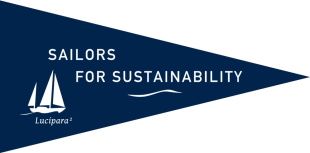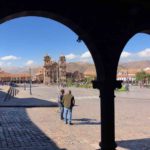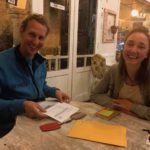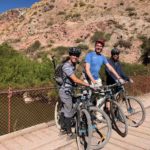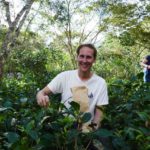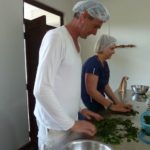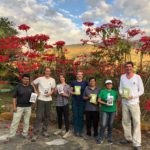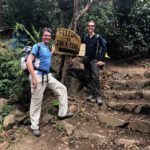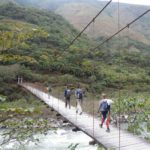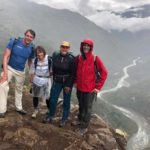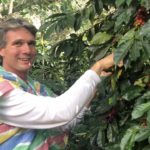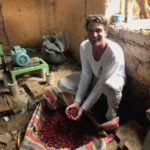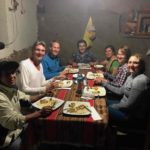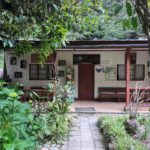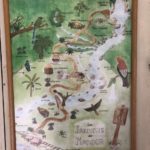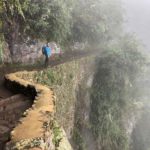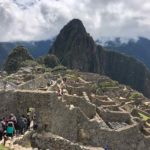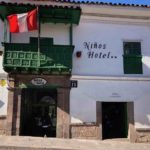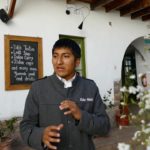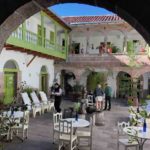Community-Based Tourism (PER)
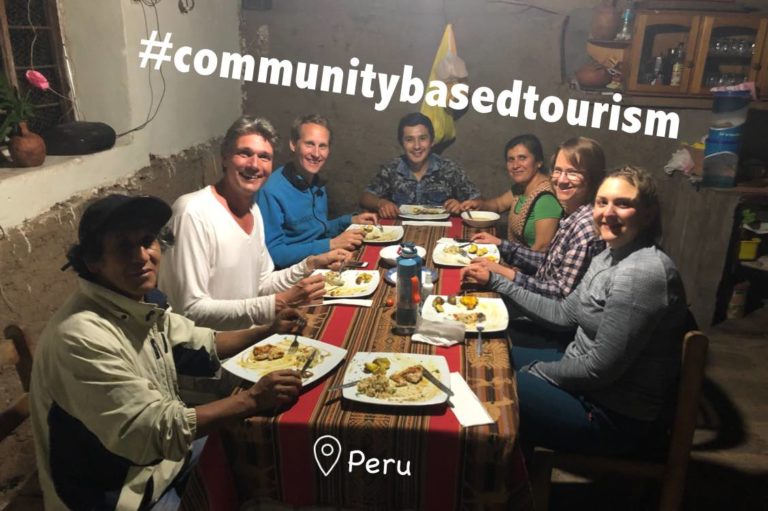
Community-based tourism, with slow travel and homestays at its core, makes for an authentic and more sustainable travel experience.
Contributes to achieving the following UN Sustainable Development Goals:
It is still dark outside when the lights are suddenly turned on and the movements of fellow passengers wake us up. The night bus from the Bolivian border town of Copacabana to our first destination in Peru has come to a halt. Floris whispers: “Time to get up, we are in Cusco!”, while peeking through the spot he cleaned on the steamy window. Still half asleep we stumble out of the bus and show the driver our luggage tickets to get our backpacks. Traveling by bus has been our modus operandi for the past month, as we have left our boat in Puerto Montt, Chile to visit Bolivia and Peru.
Busy, but Sustainable?
We explore Cusco’s historical centre while the first rays of sunlight illuminate its many archaeological monuments. They serve as silent memorials of Inca civilization and the subsequent Spanish colonial era. A few hours later the city is bustling with tourists, which creates a lively atmosphere. Tourism is an important source of income for Cusco, so much is clear to us. We do, however, wonder whether the revenues are distributed fairly among the Peruvians.
We ask Elena van Voorthuizen, expert at Better Places, a travel organization that cooperates with local entrepreneurs. She explains what the disadvantages of mass tourism are: “Many tourists stay here for only a short time. They fly across the country and cause a relatively large amount of transport emissions. As many of them visit the same attractions, what they spend goes to a small group of entrepreneurs. What’s more, these ‘fast travellers’ do not really get to know the country, the culture, and the local population.” “So how could tourism be more sustainable?” we wonder.
Homestays and Slow travel
Elena continues: “Better Places specializes in community-based tourism. That means that we organize trips that improve social conditions in Peru and leave a minimal ecological footprint. We do this with homestays, which allow tourists to stay with locals. Alternatively, we book stays in eco-lodges and hotels that support social projects, such as helping underprivileged young people. To encourage tourists to experience slow travel and stay longer in one place, we organize cycling and walking tours with local guides. That way the population benefits from tourism, while travellers experience real Peruvian life.”
This type of travel is not self-evident for the local partners Better Places works with, explains Elena. “Therefore, part of our job is to explain how they can make the stay of tourists as sustainable as possible. We discourage the use of single-use plastics, for example, and assist them with getting solar panels to generate renewable energy.”
Lodging at the Locals
Time to put the theory to the test, so the next day we hop on bikes. On a route that runs through the Sacred Valley, we see the Peruvian countryside from up-close. Our very knowledgeable guides tell us all about the history of the area, its people, and the threats they face. We regularly interrupt our cycling to visit archaeological Inca sites, such as ruins of ancient temples and agricultural lands, built as round terraces. “This is where the Incas developed techniques for growing crops in high altitudes” our guide Max explains.
The following days we literally follow in the footsteps of the Incas. Under the leadership of a local guide we hike on trails that the Incas used to reach all corners of their vast empire. Narrow paths through dense forests and along steep cliffs give us a sense of what living here 500 years ago must have been like. As we follow a different way than most hikers, we often walk with just our group of five en route to our homestays. While staying at local families’ homes we are catapulted back to 2019 and get a glimpse of what their life is like.
This area to the northwest of Cusco is well-known for its small-scale tea and coffee plantations. We make our way to a forest and meet the director of a tea plantation. “Those plants underneath the trees, that’s tea” he explains. “The forest creates a perfect ecosystem for our organic tea.” We get to pick the leaves, before bringing our harvest to the processing building, where we learn to make tea from the leaves. The next day, after another hike, we meet our new hosts, Alejandro and his family. Soon after, we find ourselves picking coffee beans on the hill above their house. “Choose only the red beans, the green ones are not yet ripe”, Alejandro instructs us. By helping with the entire process from plant to cup, we experience first-hand how much work it is to make a cup of coffee. Over dinner at their home, we learn more about the way of life of the family and the challenges they face to earn a decent living. Alejandro receives only a fraction of the retail prices for his beans, so we are glad to contribute to his income by staying with him. And we gladly buy some coffee directly from him.
Tourist Attraction
Further along the Inca trails we stay in a beautiful eco-lodge. Its owners restored the surrounding deforested land by planting hundreds of trees and shrubs. In their huge garden we follow a path along the river that ends at a waterfall. “Amazing how they have brought nature back here” Ivar exclaims. The variety of plants, flowers and other vegetation makes us feel like being in a jungle.
Early the next morning we head to the most important tourist attraction in the region. Clouds cover the site for hours, but when they finally dissipate, Machu Picchu is revealed, enchanting us instantly. The beautiful Inca temples and fortified town are so remote that the Spanish conquerors never found them to plunder and destroy. At the same time, hordes of people confront us with the phenomenon of mass tourism. Although visitor numbers are capped, we get a feeling of regret that we contribute to the site’s overexploitation.
A Hotel to Help Children
Back in Cusco we spend the night at the Niños Hotel. Rather than numbers, each room of the tastefully decorated hotel has a name. Manager Alejandro explains: “Each room is named after a child from a deprived background. Years ago, before this was a hotel, the hotel’s manager adopted these children to get them out of poverty and give them an education. They are now grown up, and the original house where they all lived has been turned into a hotel.” Yet that was only the beginning, it turns out. Alejandro continues: “We help many more children from Cusco now. They get free meals, health- and dental care and additional education through our foundation. In fact, the programme is so successful that we moved into a separate building down the street to accommodate all the children.”
Income from the hotel, its restaurant and the gift shop are used to fund the foundation. In other words, our stay here directly contributes to helping young people with fewer opportunities escape poverty, learn a trade and find a job. “And it works”, Alejandro continues with a smile: “I am living proof!” It turns out he, too, took part in the programme and upon completion was employed by the hotel. They could not have found a better ambassador for the hotel and its social mission!
The Real Thing
Thanks to slow travel and homestays we feel that we got a glimpse of what it is like to live and work in Peru. Getting to know Peruvians a bit, participating in their work, and staying at their homes made for an unforgettable experience. Hiking over ancient paths revealed Peru’s awesome natural world to us. At the same time, we realize that many visitors take a long flight to reach Peru, which is everything but sustainable. Better Places address this by compensating for the CO2emissions of every trip, including flights. Yet they recognise that it is not a long-term solution, so the organization minimizes the carbon footprint of the tours by focusing on longer trips, traveling overland and visiting natural highlights. Better Places’ founder Saskia Griep also tells us that they are in talks with airlines to make flying more sustainable. Although there is still a long way to go to make travel truly sustainable, we are already fans of community-based tourism.
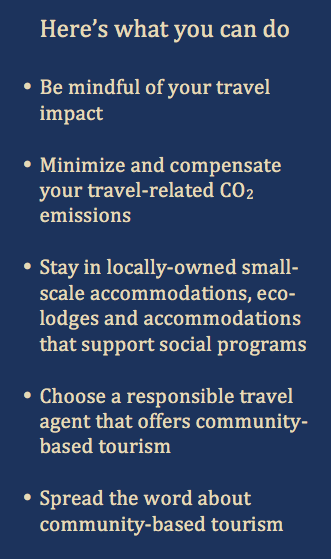
Related Sustainable Solutions

Enviroschools (NZL)
What does it take to integrate sustainability in education? New Zealand’s Enviroschools are leading the way.

Buy Local (PYF)
In Tahiti we discover markets with fresh fruit and vegetables from the island. We learn that buying local has various benefits for the community.

Self-Sufficient Living (PYF)
On the island of Taravai, we meet a self-sufficient family. Their lifestyle is not only more resilient, but also provides sustainability benefits.

Community-Based Tourism (PER)
Community-based tourism, with slow travel and homestays at its core, makes for an authentic and more sustainable travel experience.

Sustainable Schools (URY)
The buildings and teachings at these schools are textbook examples of sustainability.

Ecovillage Findhorn (GBR)
Spirituality plays a big part at Findhorn Ecovillage, which is based on love for nature and each other.
